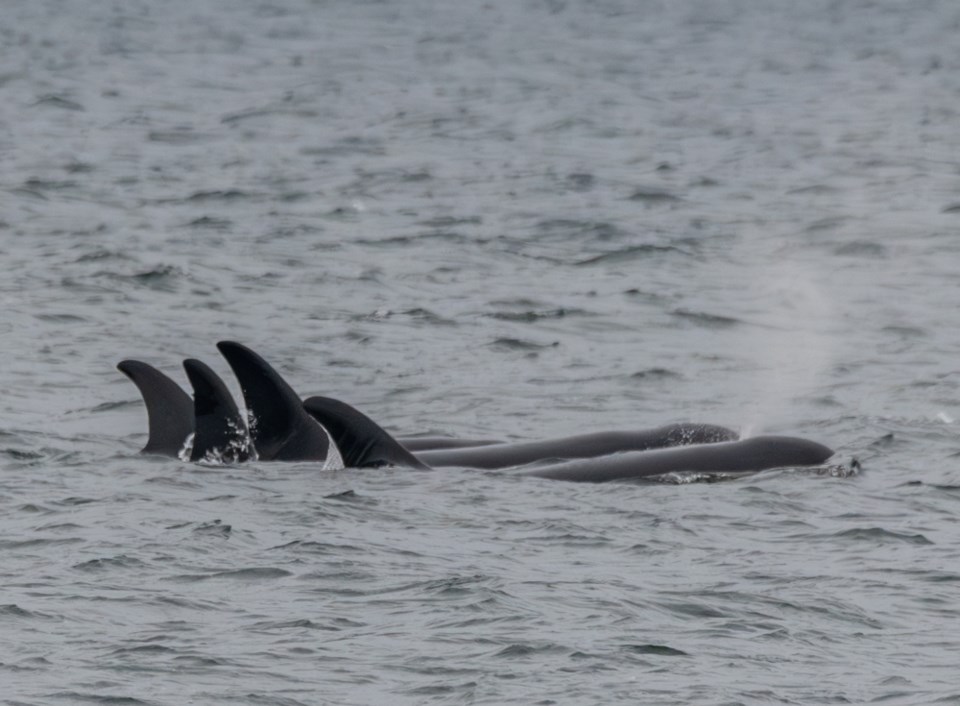The Ocean Wise team is currently trying its luck at finding and studying the winter habits of at-risk and endangered whales in the Salish Sea.
The second season of this seasonal fieldwork began in November with a sighting of all of the Southern Resident Killer Whales, which includes 74 or 75 members across the J, K and L pods, on the first day out. The superpod was heading up to the Gulf Islands by Pender and Galliano, and researchers were able to collect some samples, Ocean Wise research technician Gary Sutton said.
“If it’s in the Salish Sea, and we encounter it, we’re definitely going to be looking at it,” Sutton said. “We’re hoping here in the next few weeks, when the weather cooperates, to possibly get over towards the Sunshine Coast, at least the mouth of Howe Sound [and] up towards Sechelt, and have a look for those guys. This… is the time of year where particularly the A42s like to hang out down here.”
The fieldwork will continue until the beginning of April, and is both opportunistic and weather dependent. With a longer field season than the pilot phase, Sutton said Ocean Wise has been able to collaborate with the Marine Education and Research Society (MERS) on a study looking at the scarring rates on humpback whales to determine the rate of entanglements in the population.
In the first year of the winter study, Sutton said they were able to document J pod in several unexpected areas of the Strait of Georgia, where they typically aren't seen in the summer months. The researchers were able to collect a prey sample, which will help researchers determine where and what they are hunting.
Southern resident killer whales face numerous stressors to their population: they live in a high traffic area, with both contaminant and noise pollution, their food source has been declining, and a third of the southern resident population was removed during the capture era in the 1960s and ‘70s. Although the northern residents also face these threats, it is to a lesser degree because of their habitat region.
“In the recovery strategy for southern residents, actually for northern residents and humpbacks as well, the big missing piece is what are these animals doing in the winter? And how does it differ from the summer?” Sutton said. He noted it seems J pod is spending more time here in the winter than they are in the summer, and researchers are hoping to deduce what’s driving that.
Prey samples will be provided to Fisheries and Oceans Canada’s ongoing diet study, which Sutton hopes will help guide targeted management and conservation efforts.
With Bigg’s killer whales, humpbacks and other whale populations, the researchers are working to refine how they collect environmental DNA samples. Historically, DNA has been collected via blubber samples by shooting them with a spring loaded dart from a crossbow or rifle, but newer methods can collect genetic information samples from whales without ever touching them.
So far, the success rate of the new collection method has been around 40 per cent — higher than expected, Sutton said, considering they’re “basically starting from ground zero.” They’re continuing to refine their methods with the help of a new filtering machine that will help increase the volume of the sample. All of this will, hopefully, give the researchers a better scope of what’s going on with the populations genetically, especially for the small and inbred population of southern residents.
The best way for the public to help with this research is to report their sightings via the WhaleReport app. “Any help with that really makes out job a lot easier,” Sutton said.




